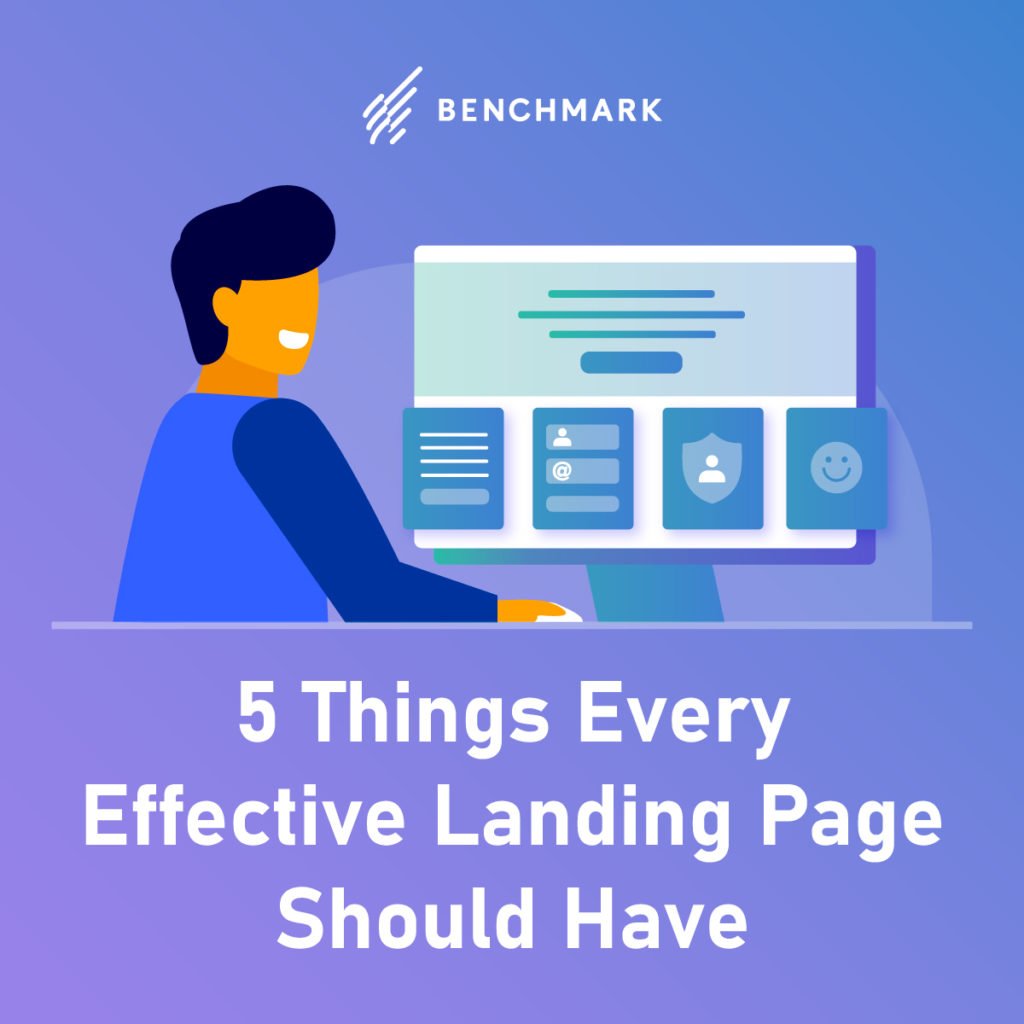All marketing roads need to lead somewhere, and often, that somewhere is a landing page. As such, optimizing your landing pages is an essential step for your inbound marketing efforts. Landing pages are how most of your site visitors will convert into leads for your company. And in a lot of ways, they’re where the buyer’s journey begins.
There’s a lot that you can learn from your landing pages — if they’re done right. This includes who’s coming to your site, from where, and what they’re doing once they get there. This is key information for composing your audience personas and creating better-targeted marketing materials. It also helps you qualify your visitors, narrowing in on those who are most interested in your product or service.
For your landing page to, well, land, you need to make sure the core components are present. So what are they? Here are five factors you have to nail to build a successful landing page.
1. The Header
The first question a prospect is going to ask when they end up on your landing page is, why am I here? You need to be able to convey value and purpose right away, which means you’ll need a solid header.
Think of your landing page header like the title of a blog post. It should clearly and concisely cue visitors into what they’ll find there. An image in the header can take it a step further in establishing brand identity from the get-go. To keep it consistent, be sure to use the same look and feel across your landing pages, as well as the guide or a gated resource that they lead to.
2. The Copy
Again, concise is the name of the game. The copy on your landing page should be descriptive, short, and concise, and should have direct ties to the ad copy that brought a visitor there in the first place.
If your landing page is serving as the “gate” for a how-to guide, use the body copy to present the issue that the guide helps solve. Then, list bullet points outlining what specific topics the guide will cover. This serves to further clue visitors in on where the value is. And as with all other types of marketing copy, transparency and authenticity are always appreciated.
3. The Form
The form on your landing page is crucial. Gated assets are gated for a reason: to generate leads. If you give the information away for free, without the requirement of exchanging contact info, you miss out on a big opportunity to build your email list.
Once you have your visitors’ information, you can start sending them more targeted content. What information you request they provide in the form depends on your needs, but at the very least, ask for their first name, last name, and email address. Don’t forget to provide a way for them to opt-in to receiving your email newsletter. Other things that you can ask for include their marketing budgets (or budget for whatever service it is that you’re offering), their job title, company name and size, and the region that they’re operating out of. All of this information helps you better segment your email lists and approach leads with more useful content.
4. The GDPR Disclaimer
Okay, so this one doesn’t have to be right on your landing page, but you do need to have the appropriate GDPR language on the policy attached to your landing page.
GDPR, which stands for General Data Protection Regulation, refers to rules of law set by the European Commission to protect consumer data. Even if your company isn’t operating out of the EU, you may have visitors that are, so you’ll need to include the language. As for the text itself, it should include a short paragraph that lets your prospect know what you’ll be doing with their information.
5. Some Sort of “Thank You”
Make sure to show your gratitude for visitors being interested in your company and whatever is behind your landing page. This can be a page that your prospects are automatically redirected to after they fill out the landing page form, or you can simply send a “thank you” email along with the asset they’ve signed up to receive. Either way, you do it, it’s always a smart idea to thank your prospects for filling out the form and engaging with your brand.
When you put effort into your landing pages, you end up with happier, better-qualified leads — and it’s easy to see the benefits in that. Take the time to optimize your landing pages, and if they’re not performing quite as well as you want them to, go back to these essential components and see if any of them might need a little bit of tweaking.
